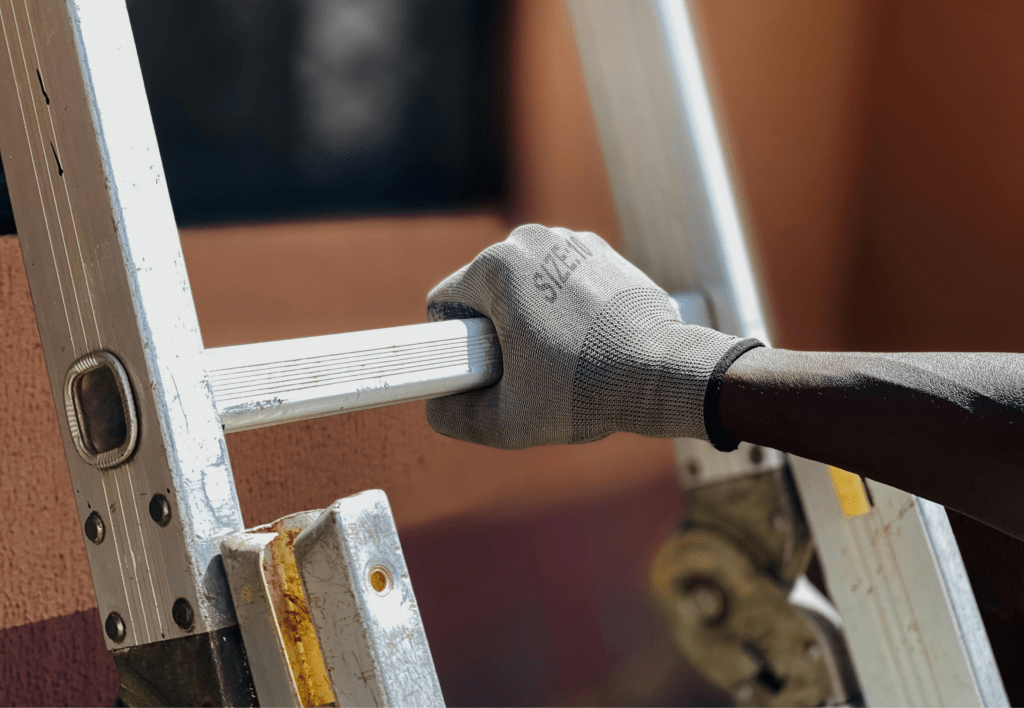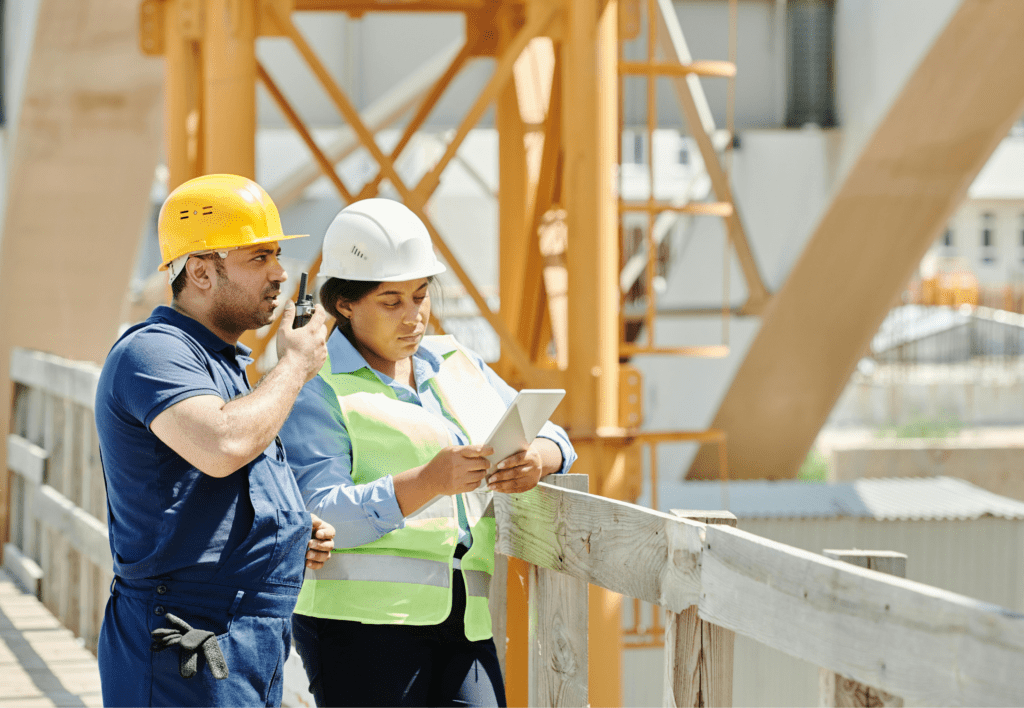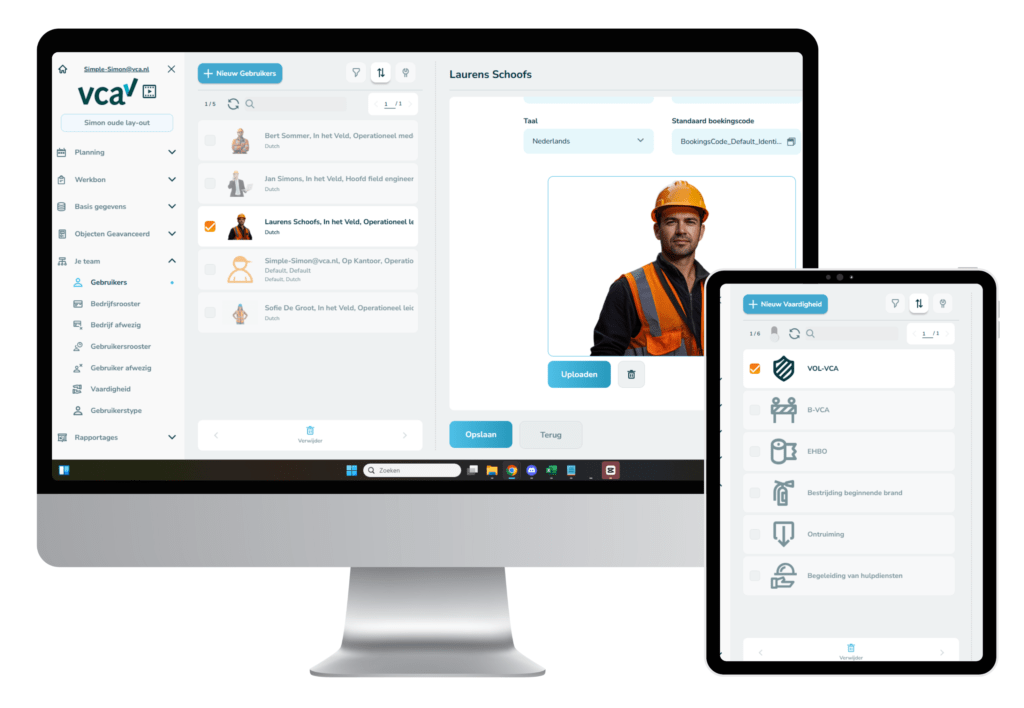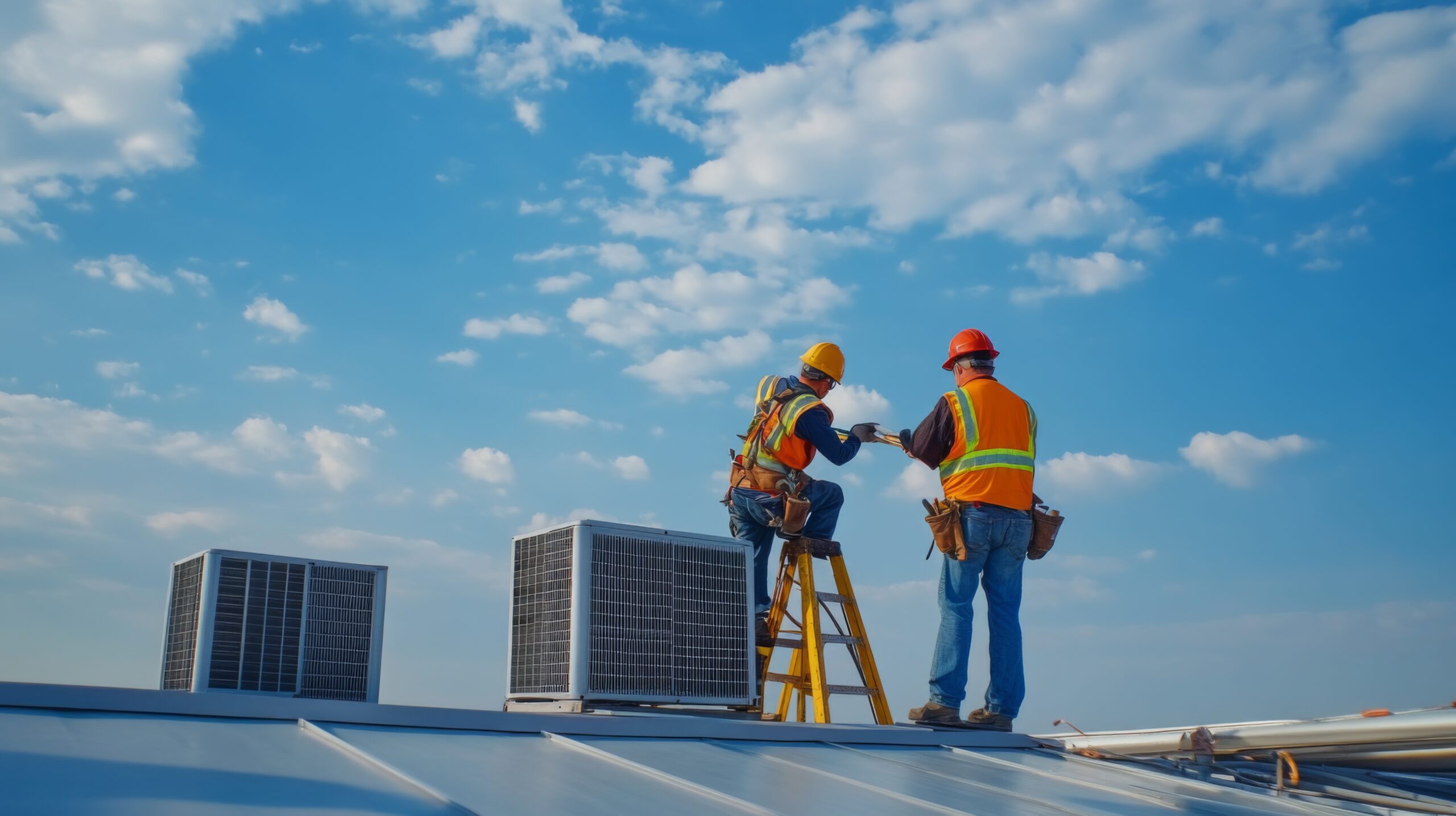What is VCA?
VCA stands for Veiligheid, Gezondheid en Milieu Checklist Aannemers and is a widely used safety management system across the Netherlands and Belgium with over 1.5 million certified professionals and 15,000 certified companies. It’s also known as the SCC (Safety, Health and Environment (SHE) Checklist for Contractors) in English.
The VCA aims to create safer working environments in high-risk sectors like construction, installation, and maintenance, and there are multiple types of VCA certificates and diplomas depending on whether you’re getting certified as a company or an individual, the company size, activities, and risk profile.
Getting a VCA certificate as a company
While some companies may voluntarily opt to get VCA-certified, if you work in high-risk sectors like construction or maintenance, it’s quite likely you’ll need a VCA certification to qualify for client contracts. Here are the three types of VCA certification for companies:
- VCA*: for subcontractors with fewer employees and no direct managerial role.
- VCA**: for companies that manage projects and subcontractors.
- VCA-Petrochemie: for large multinationals or companies, mainly in the petrochemical industry.
To get certified, companies need to comply with the VCA checklist and manage their safety processes, systems and documentation—including TRAs and LMRA forms—effectively. If they pass the audit they’ll receive a VCA certificate that is valid for 3 years with interim audits on a yearly basis.
Simple-Simon enables companies to easily customize these safety-related forms, remind technicians to complete them before jobs, and manage the entire process digitally. This not only saves time and simplifies the process for office and field staff, but also means companies can stay compliant with the VCA and successfully pass the certification and interim audits.
Managing your employees’ VCA diplomas
Individuals who work for companies that are required to have a VCA certificate often also need an individual VCA- diploma to work on certain jobs. This requires the individual completing a VCA training course and passing the test. Employers are responsible for ensuring they only permit certified employees to enter clients’ sites, and providing proof of VCA diploma as needed.
But managing your employees’ and contractors’ VCA diplomas can be messy if you’re trying to track their diplomas manually and keep checking back on an excel sheet when you’re assigning technicians to a job. Instead, try using Simple-Simon to get a single view of your workforce’s certifications and get notified when they’re about to expire.

Barriers to VCA compliance
Even if you consider your company or yourself organised, implementing the processes and documentation needed to get and stay certified is a challenge, especially if you’re doing it manually. The most common barriers to VCA compliance are:
1. Paper overload
Safety forms like LMRAs and TRAs are often filled out on paper, which often get lost, forgotten or damaged (with spilt coffee often being the culprit). Paper forms also lead to inaccurate and incomplete safety assessments as employees rush between jobs and forget to fill in key details. This can be both a barrier to getting certified and a risk of losing your certification or clients if you cannot show historical records of these forms being completed for every job.
2. No centralized view
Office teams usually have limited insight into what’s happening on-site, relying on field staff to submit the relevant forms correctly and on time. This often causes frustration during audits when office staff have to spend hours searching for forms in their folders or chasing down missing forms. It also increases the risk of an employee or contractor entering a site without a valid VCA diploma, which poses a financial, safety, and reputational risk.
What is the role of TRAs and LMRAs in VCA certification
As we mentioned earlier, managing your TRA and LMRA forms properly is critical to VCA compliance and ensuring your employees act safely on-site. That’s why auditors and clients often ask to see completed TRAs and LMRAs as proof that you’re actually applying your safety processes in the field—and why you need to be able to locate them when asked.
What is a TRA?
A TRA, or a Task Risk Analysis, is a structured risk assessment carried out before starting complex, non-routine, or high-risk work e.g. working at height or with hazardous materials. It includes a description of the task, identified hazards, risk assessment, control measures, and approvals by authorised individuals.
A TRA must be completed before the job starts to ensure that everyone involved understands the potential risks, hazards, and control measures for the specific task(s) that will be carried out.
What is an LMRA?
A LMRA, or a Last Minute Risk Analysis, is a safety assessment that is performed on-site, right before a task is started. It’s basically a double check that the working conditions are as expected and safe enough to complete the task. For example, whether the ladder is stable, whether all individuals present have the relevant certification etc.
It normally takes just a minute or two, but skipping it can mean missing out on newly emerged risks and putting your staff in danger. VCA-certified companies are required to conduct and document LMRAs for every job.







